A Comprehensive Review of the Oil Flow Mechanism and Numerical Simulations in Shale Oil Reservoirs
Abstract
1. Introduction
2. Oil Flow Mechanism in Shales
2.1. Shale Oil Occurrence Status
2.2. Shale Oil Flow in the Inorganic Matrix
2.3. Shale Oil Flow in the Organic Matrix
2.3.1. Shrinkage and Expansion of Kerogen during Shale Oil Flow
2.3.2. Oil Diffusion in Kerogen
2.3.3. Oil Transport in the Organic Pore Channels
2.3.4. Coupling of Diffusion and Fluid Transport in the Organic Matrix
3. Numerical Simulation Methods in Shale Oil Flow
3.1. Shale Oil Microflow Simulation
3.1.1. Molecular Dynamics Simulation
3.1.2. Lattice Boltzmann Method
3.1.3. Pore Network Model
3.2. Shale Oil Microflow and Macroflow Coupling Model
4. Conclusions and Perspectives
Author Contributions
Funding
Data Availability Statement
Conflicts of Interest
References
- US Energy Information Administration (EIA). How Much Shale (Tight) Oil Is Produced in the United States? Available online: https://www.eia.gov/tools/faqs/faq.php?id=847&t=6 (accessed on 4 October 2022).
- Liu, X.H.; Xia, P.; Zhu, Q. Global oil market situation and future trend in 2020. Nat. Resour. Inf. 2021, 5, 3–10. [Google Scholar]
- Zhao, W.; Hu, S.; Hou, L.; Yang, T.; Li, X.; Guo, B.; Yang, Z. Types and resource potential of continental shale oil in China and its boundary with tight oil. Pet. Explor. Dev. 2020, 47, 1–11. [Google Scholar] [CrossRef]
- Cao, C.; Jia, P.; Cheng, L.; Jin, Q.; Qi, S. A review on application of data-driven models in hydrocarbon production forecast. J. Pet. Sci. Eng. 2022, 212, 110296. [Google Scholar] [CrossRef]
- Sang, Q.; Zhao, X.; Liu, Y.; Li, Z.; Dong, M. Effects of the laminated-structure and mixed wettability on the oil/water relative permeabilities and oil productions in shale oil formations. J. Pet. Sci. Eng. 2022, 208, 109457. [Google Scholar] [CrossRef]
- Xu, Y.; Lun, Z.; Pan, Z.; Wang, H.; Zhou, X.; Zhao, C.; Zhang, D. Occurrence space and state of shale oil: A review. J. Pet. Sci. Eng. 2022, 211, 110183. [Google Scholar] [CrossRef]
- Wu, T.; Pan, Z.; Liu, B.; Connell, L.D.; Sander, R.; Fu, X. Laboratory Characterization of Shale Oil Storage Behavior: A Comprehensive Review. Energy Fuels 2021, 35, 7305–7318. [Google Scholar] [CrossRef]
- Zhang, W.; Feng, Q.; Wang, S.; Xing, X. Oil diffusion in shale nanopores: Insight of molecular dynamics simulation. J. Mol. Liq. 2019, 290, 111183. [Google Scholar] [CrossRef]
- Jin, Z.; Wang, G.; Liu, G.; Gao, B.; Liu, Q.; Wang, H.; Lang, X.; Wang, R. Research progress and key scientific issues of continental shale oil in China. Acta Pet. Sin. 2021, 42, 821–835. [Google Scholar]
- Roy, S.; Raju, R.; Chuang, H.F.; Cruden, B.A.; Meyyappan, M. Modeling gas flow through microchannels and nanopores. J. Appl. Phys. 2003, 93, 4870–4879. [Google Scholar] [CrossRef]
- Feng, Q.; Xu, S.; Wang, S.; Li, Y.; Gao, F.; Xu, Y. Apparent permeability model for shale oil with multiple mechanisms. J. Pet. Sci. Eng. 2019, 175, 814–827. [Google Scholar] [CrossRef]
- Xiao, J.R.; Wei, J. Diffusion mechanism of hydrocarbons in zeolites—II. Analysis of experimental observations. Chem. Eng. Sci. 1992, 47, 1143–1159. [Google Scholar] [CrossRef]
- Wang, H.; Su, Y.; Wang, W.; Sheng, G.; Li, H.; Zafar, A. Enhanced water flow and apparent viscosity model considering wettability and shape effects. Fuel 2019, 253, 1351–1360. [Google Scholar] [CrossRef]
- Han, Y.; Horsfield, B.; Wirth, R.; Mahlstedt, N.; Bernard, S. Oil retention and porosity evolution in organic-rich shales. AAPG Bull. 2017, 101, 807–827. [Google Scholar] [CrossRef]
- Sang, Q.; Zhao, X.Y.; Liu, H.M.; Dong, M.Z. Analysis of imbibition of n-alkanes in kerogen slits by molecular dynamics simu-lation for characterization of shale oil rocks. Pet. Sci. 2022, 19, 1236–1249. [Google Scholar] [CrossRef]
- Wang, S.; Liang, Y.; Feng, Q.; Javadpour, F. Sticky layers affect oil transport through the nanopores of realistic shale kerogen. Fuel 2022, 310, 122480. [Google Scholar] [CrossRef]
- Lautenschlaeger, M.P.; Weinmiller, J.; Kellers, B.; Danner, T.; Latz, A. Homogenized lattice Boltzmann model for simulating multi-phase flows in heterogeneous porous media. Adv. Water Resour. 2022, 170, 104320. [Google Scholar] [CrossRef]
- Saif, T.; Lin, Q.Y.; Butcher, A.R.; Bijeljic, B.; Blunt, M.J. Multi-scale multi-dimensional microstructure imaging of oil shale py-rolysis using X-ray micro-tomography, automated ultra-high resolution SEM, MAPS Mineralogy and FIB-SEM. Appl. Energy 2017, 202, 628–647. [Google Scholar] [CrossRef]
- Zhan, H.; Li, X.; Hu, Z.; Duan, X.; Guo, W.; Li, Y. Influence of Particle Size on the Low-Temperature Nitrogen Adsorption of Deep Shale in Southern Sichuan, China. Minerals 2022, 12, 302. [Google Scholar] [CrossRef]
- Wang, S.; Javadpour, F.; Feng, Q. Molecular dynamics simulations of oil transport through inorganic nanopores in shale. Fuel 2016, 171, 74–86. [Google Scholar] [CrossRef]
- Falk, K.; Coasne, B.; Pellenq, R.; Ulm, F.-J.; Bocquet, L. Subcontinuum mass transport of condensed hydrocarbons in nanoporous media. Nat. Commun. 2015, 6, 6949. [Google Scholar] [CrossRef]
- Liu, J.; Yang, Y.; Sun, S.; Yao, J.; Kou, J. Flow behaviors of shale oil in kerogen slit by molecular dynamics simulation. Chem. Eng. J. 2022, 434, 134682. [Google Scholar] [CrossRef]
- Ho, T.A. Water and Methane in Shale Rocks: Flow Pattern Effects on Fluid Transport and Pore Structure. In Springer Theses; Springer Science and Business Media LLC: Berlin/Heidelberg, Germany, 2017; pp. 53–64. [Google Scholar]
- Xu, J.; Wang, R.; Zan, L. Shale oil occurrence and slit medium coupling based on a molecular dynamics simulation. J. Pet. Sci. Eng. 2023, 220, 111151. [Google Scholar] [CrossRef]
- Sui, H.; Zhang, F.; Wang, Z.; Wang, D.; Wang, Y. Molecular simulations of oil adsorption and transport behavior in inorganic shale. J. Mol. Liq. 2020, 305, 112745. [Google Scholar] [CrossRef]
- Zhang, W.; Feng, Q.; Wang, S.; Zhang, X.; Zhang, J.; Cao, X. Molecular Simulation Study and Analytical Model for Oil–Water Two-Phase Fluid Transport in Shale Inorganic Nanopores. Energies 2022, 15, 2521. [Google Scholar] [CrossRef]
- Zhang, T.; Javadpour, F.; Li, X.; Wu, K.; Li, J.; Yin, Y. Mesoscopic method to study water flow in nanochannels with different wettability. Phys. Rev. E 2020, 102, 013306. [Google Scholar] [CrossRef]
- Zhao, W.; Jia, C.; Zhang, T.; Jiang, L.; Li, X.; Jiang, Z.; Zhang, F. Effects of nanopore geometry on confined water flow: A view of lattice Boltzmann simulation. Chem. Eng. Sci. 2021, 230, 116183. [Google Scholar] [CrossRef]
- Liu, Y.; Zou, S.; He, Y.; Sun, S.; Ju, Y.; Meng, Q.; Cai, J. Influence of fractal surface roughness on multiphase flow behavior: Lattice Boltzmann simulation. Int. J. Multiph. Flow 2021, 134, 103497. [Google Scholar] [CrossRef]
- Zhang, T.; Li, X.; Yin, Y.; He, M.; Liu, Q.; Huang, L.; Shi, J. The transport behaviors of oil in nanopores and nanoporous media of shale. Fuel 2019, 242, 305–315. [Google Scholar] [CrossRef]
- Wang, Y.; Xia, Y.; Feng, Z.; Shao, H.; Qiu, J.; Ma, S.; Zhang, J.; Jiang, H.; Li, J.; Gao, B.; et al. Microscale Evaluation of Tight Oil Mobility: Insights from Pore Network Simulation. Energies 2021, 14, 4580. [Google Scholar] [CrossRef]
- Zhang, W.; Feng, Q.; Wang, S.; Zhang, J.; Jin, Z.; Xia, T.; Xing, X.; Lv, P. Pore network modeling of oil and water transport in nanoporous shale with mixed wettability. J. Pet. Sci. Eng. 2022, 209, 109884. [Google Scholar] [CrossRef]
- Zheng, H.; Yang, F.; Guo, Q.; Pan, S.; Jiang, S.; Wang, H. Multi-scale pore structure, pore network and pore connectivity of tight shale oil reservoir from Triassic Yanchang Formation, Ordos Basin. J. Pet. Sci. Eng. 2022, 212, 110283. [Google Scholar] [CrossRef]
- Shi, F.; Wang, D.B.; Li, H. An XFEM-based approach for 3D hydraulic fracturing simulation considering crack front segmen-tation. J. Pet. Sci. Eng. 2022, 214, 110518. [Google Scholar] [CrossRef]
- Rashid, H.; Olorode, O.; Chukwudozie, C. An iteratively coupled model for flow, deformation, and fracture propagation in fractured unconventional reservoirs. J. Pet. Sci. Eng. 2022, 214, 110468. [Google Scholar] [CrossRef]
- Belytschko, T.; Black, T. Elastic crack growth in finite elements with minimal remeshing. Int. J. Numer. Methods Eng. 1999, 45, 601–620. [Google Scholar] [CrossRef]
- Cong, Z.; Li, Y.; Pan, Y.; Liu, B.; Shi, Y.; Wei, J.; Li, W. Study on CO2 foam fracturing model and fracture propagation simulation. Energy 2022, 238, 121778. [Google Scholar] [CrossRef]
- Zhang, H.; Sheng, J.J. Complex fracture network simulation and optimization in naturally fractured shale reservoir based on modified neural network algorithm. J. Nat. Gas Sci. Eng. 2021, 95, 104232. [Google Scholar] [CrossRef]
- Pei, Y.; Yu, W.; Sepehrnoori, K.; Gong, Y.; Xie, H.; Wu, K. The Influence of Development Target Depletion on Stress Evolution and Infill Drilling of Upside Target in the Permian Basin. SPE Reserv. Eval. Eng. 2021, 24, 570–589. [Google Scholar] [CrossRef]
- Tang, J.; Wu, K.; Li, Y.; Hu, X.; Liu, Q.; Ehlig-Economides, C. Numerical investigation of the interactions between hydraulic fracture and bedding planes with non-orthogonal approach angle. Eng. Fract. Mech. 2018, 200, 1–16. [Google Scholar] [CrossRef]
- Crouch, S.L.; Starfield, A.M.; Rizzo, F.J. Boundary Element Methods in Solid Mechanics. J. Appl. Mech. 1983, 50, 704–705. [Google Scholar] [CrossRef]
- Crouch, S.L. Solution of plane elasticity problems by the displacement discontinuity method. I. Infinite body solution. Int. J. Numer. Methods Eng. 1976, 10, 301–343. [Google Scholar] [CrossRef]
- Jiao, K.; Han, D.; Li, J.; Bai, B.; Gong, L.; Yu, B. A novel LBM-DEM based pore-scale thermal-hydro-mechanical model for the fracture propagation process. Comput. Geotech. 2021, 139, 104418. [Google Scholar] [CrossRef]
- Varzaneh, A.A.S.; Ahmadi, M.; Goshtasbi, K. Simulation of hydraulic fracturing and Darcy fluid flow in a porous medium using a coupled Discrete Element Method with fluid flow. J. Pet. Sci. Eng. 2021, 204, 108706. [Google Scholar] [CrossRef]
- Cundall, P.A.; Strack, O.D.L. A discrete numerical model for granular assemblies. Géotechnique 1979, 29, 47–65. [Google Scholar] [CrossRef]
- Li, S.; Sang, Q.; Dong, M.; Luo, P. Determination of inorganic and organic permeabilities of shale. Int. J. Coal Geol. 2019, 215, 103296. [Google Scholar] [CrossRef]
- Liu, F.; Kang, Y.; Hu, Y.; Xu, J.; Chen, H.; Pan, H.; Feng, G. New Model of Oil Migration in Shale Nanopores Considering Microscopic Deformation Induced by Stress and Pore Pressure. Energy Fuels 2022, 36, 14230–14242. [Google Scholar] [CrossRef]
- Li, S. Study of Oil Flow Mechanisms in Shale Reservoirs. Ph.D. Thesis, University of Calgary, Calgary, AB, Canada, 2020. Unpublished Doctoral Thesis. [Google Scholar]
- Xu, J.; Wang, W.; Ma, B.; Su, Y.; Wang, H.; Zhan, S. Stochastic-based liquid apparent permeability model of shale oil reservoir considering geological control. J. Pet. Explor. Prod. Technol. 2021, 11, 3759–3773. [Google Scholar] [CrossRef]
- Li, S.; Li, S.; Guo, R.; Zhou, X.; Wang, Y.; Chen, J.; Zhang, J.; Hao, L.; Ma, X.; Qiu, J. Occurrence State of Soluble Organic Matter in Shale Oil Reservoirs from the Upper Triassic Yanchang Formation in the Ordos Basin, China: Insights from Multipolarity Sequential Extraction. Nat. Resour. Res. 2021, 30, 4379–4402. [Google Scholar] [CrossRef]
- Liang, S.; Wang, J.-M.; Liu, Y.-K.; Liu, B.; Sun, S.; Shen, A.-Q.; Tao, F.-Y. Oil Occurrence States in Shale Mixed Inorganic Matter Nanopores. Front. Earth Sci. 2022, 9, 1456. [Google Scholar] [CrossRef]
- Zhang, K.; Jiang, S.; Zhao, R.; Wang, P.; Jia, C.; Song, Y. Connectivity of organic matter pores in the Lower Silurian Longmaxi Formation shale, Sichuan Basin, Southern China: Analyses from helium ion microscope and focused ion beam scanning electron microscope. Geol. J. 2022, 57, 1912–1924. [Google Scholar] [CrossRef]
- Chen, Y.; Zhu, Z.; Zhang, L. Control actions of sedimentary environments and sedimentation rates on lacustrine oil shale distribution, an example of the oil shale in the Upper Triassic Yanchang Formation, southeastern Ordos Basin (NW China). Mar. Pet. Geol. 2019, 102, 508–520. [Google Scholar] [CrossRef]
- Feng, Y.; Xiao, X.; Wang, E.; Sun, J.; Gao, P. Oil Retention in Shales: A Review of the Mechanism, Controls and Assessment. Front. Earth Sci. 2021, 9, 720839. [Google Scholar] [CrossRef]
- Zhang, A.D.; Wang, J.P.; Wang, Y.C.; Hong, S.X.; Tan, W.L. Reservoir space types and oil occurrence of Gulong shale in Songliao Basin. Pet. Geol. Oilfield Dev. Daqing 2021, 40, 68–77. [Google Scholar]
- Hu, T.; Pang, X.; Jiang, F.; Wang, Q.; Liu, X.; Wang, Z.; Jiang, S.; Wu, G.; Li, C.; Xu, T.; et al. Movable oil content evaluation of lacustrine organic-rich shales: Methods and a novel quantitative evaluation model. Earth-Sci. Rev. 2021, 214, 103545. [Google Scholar] [CrossRef]
- Huang, L.; Khoshnood, A.; Firoozabadi, A. Swelling of Kimmeridge kerogen by normal-alkanes, naphthenes and aromatics. Fuel 2020, 267, 117155. [Google Scholar] [CrossRef]
- Zhu, R.K.; Zhang, J.Y.; Li, M.Y.; Cai, Y.; Wu, S.T.; Liu, C.; Zhang, S.R.; Kang, Y. Advances and key issues in the basic research of non-marine shale oil enrichment. Acta Geol. Sin. 2023, 1–23. [Google Scholar]
- Ruppert, L.F.; Sakurovs, R.; Blach, T.P.; He, L.; Melnichenko, Y.B.; Mildner, D.F.R.; Alcantar-Lopez, L. A USANS/SANS Study of the Accessibility of Pores in the Barnett Shale to Methane and Water. Energy Fuels 2013, 27, 772–779. [Google Scholar] [CrossRef]
- Zou, C.N.; Yang, Z.; Pan, S.Q.; Chen, Y.Y.; Lin, S.H.; Huang, J.L.; Wu, S.T.; Dong, D.Z.; Wang, S.F.; Liang, F.; et al. Shale Gas Formation and Occurrence in China: An Overview of the Current Status and Future Potential. Acta Geol. Sin. 2016, 90, 1249–1283. [Google Scholar]
- Jagadisan, A.; Heidari, Z. Experimental Quantification of the Effect of Thermal Maturity of Kerogen on Its Wettability. SPE Reserv. Eval. Eng. 2019, 22, 1323–1333. [Google Scholar] [CrossRef]
- Sang, Q.; Zhang, S.; Li, Y.; Dong, M.; Bryant, S. Determination of organic and inorganic hydrocarbon saturations and effective porosities in shale using vacuum-imbibition method. Int. J. Coal Geol. 2018, 200, 123–134. [Google Scholar] [CrossRef]
- Li, R.; Chen, Z.; Wu, K.; Hao, X.; Xu, J. An analytical model for water-oil two-phase flow in inorganic nanopores in shale oil reservoirs. Pet. Sci. 2021, 18, 1776–1787. [Google Scholar] [CrossRef]
- Huang, J.; Jin, T.; Chai, Z.; Barrufet, M.; Killough, J. Compositional simulation of three-phase flow in mixed-wet shale oil reservoir. Fuel 2020, 260, 116361. [Google Scholar] [CrossRef]
- Zhao, X.; Sang, Q.; Li, Y.; Shi, L.; Liu, H.; Dong, M. Mobilization of oil in organic matter and its contribution to oil production during primary production in shale. Fuel 2021, 287, 119449. [Google Scholar] [CrossRef]
- Chen, T.; Feng, X.-T.; Pan, Z. Experimental study of swelling of organic rich shale in methane. Int. J. Coal Geol. 2015, 150–151, 64–73. [Google Scholar] [CrossRef]
- Su, Y.; Wang, H.; Zhan, S.; Wang, W.; Xu, J. Research progress on characterization and simulation of shale oil flow in microscale. J. Shenzhen Univ. Sci. Eng. 2021, 38, 579–589. [Google Scholar] [CrossRef]
- Myers, T.G. Why are slip lengths so large in carbon nanotubes? Microfluid. Nanofluid. 2011, 10, 1141–1145. [Google Scholar] [CrossRef]
- Gao, Z.Y.; Fan, Y.P.; Hu, Q.H.; Jiang, Z.X.; Cheng, Y.; Xuan, Q.X. A review of shale wettability characterization using spon-taneous imbibition experiments. Mar. Pet. Geol. 2019, 109, 330–338. [Google Scholar] [CrossRef]
- Li, X.F.; Feng, D.; Zhang, T.; Sun, Z.; He, M.X.; Liu, Q.; Liu, W.Y.; Zhao, W.; Li, J. The role and its application of capillary force in the development of unconventional oil and gas reservoirs and its application. Acta Pet. Sin. 2020, 41, 1719–1733. [Google Scholar]
- Wu, K.; Chen, Z.; Li, J.; Li, X.; Xu, J.; Dong, X. Wettability effect on nanoconfined water flow. Proc. Natl. Acad. Sci. USA 2017, 114, 3358–3363. [Google Scholar] [CrossRef] [PubMed]
- Yassin, M.R.; Begum, M.; Dehghanpour, H. Organic shale wettability and its relationship to other petrophysical properties: A Duvernay case study. Int. J. Coal Geol. 2017, 169, 74–91. [Google Scholar] [CrossRef]
- Li, Z.-Z.; Min, T.; Kang, Q.; He, Y.-L.; Tao, W.-Q. Investigation of methane adsorption and its effect on gas transport in shale matrix through microscale and mesoscale simulations. Int. J. Heat Mass Transf. 2016, 98, 675–686. [Google Scholar] [CrossRef]
- Takbiri-Borujeni, A.; Fathi, E.; Kazemi, M.; Belyadi, F. An integrated multiscale model for gas storage and transport in shale reservoirs. Fuel 2019, 237, 1228–1243. [Google Scholar] [CrossRef]
- Wang, H.; Wang, W.D.; Su, Y.L.; Jin, Z.H. Lattice Boltzmann Model for Oil/Water Two- Phase Flow in Nanoporous Media Considering Heterogeneous Viscosity, Liquid/Solid, and Liquid/Liquid Slip. SPE J. 2022, 27, 3508–3524. [Google Scholar] [CrossRef]
- Zachariah, G.T.; Panda, D.; Surasani, V.K. Lattice Boltzmann simulations for invasion patterns during drying of capillary porous media. Chem. Eng. Sci. 2019, 196, 310–323. [Google Scholar] [CrossRef]
- Cui, R.; Feng, Q.; Chen, H.; Zhang, W.; Wang, S. Multiscale random pore network modeling of oil-water two-phase slip flow in shale matrix. J. Pet. Sci. Eng. 2019, 175, 46–59. [Google Scholar] [CrossRef]
- Wang, X.; Zhang, Z.; Gong, R.; Wang, S. Pore Network Modeling of Oil–Water Flow in Jimsar Shale Oil Reservoir. Front. Earth Sci. 2021, 9, 738545. [Google Scholar] [CrossRef]
- Lin, M.; Jiang, W.B.; Li, Y.; Yi, Z.X.; Zhang, Z.B. Several Questions in the Micro-Scale Flow of Shale Oil/Gas. Bull. Mineral. Petrol. Geochem. 2015, 34, 18–28. [Google Scholar]
- Yang, Y.; Wang, K.; Zhang, L.; Sun, H.; Zhang, K.; Ma, J. Pore-scale simulation of shale oil flow based on pore network model. Fuel 2019, 251, 683–692. [Google Scholar] [CrossRef]
- Zhao, J.; Qin, F.; Derome, D.; Kang, Q.; Carmeliet, J. Improved pore network models to simulate single-phase flow in porous media by coupling with lattice Boltzmann method. Adv. Water Resour. 2020, 145, 103738. [Google Scholar] [CrossRef]
- Song, W.H.; Liu, L.; Sun, H.; Zhang, K.; Yang, Y.F.; Yao, J. Pore structure characterization and flow ability of shale oil reservoir based on digital cores. Pet. Reserv. Eval. Dev. 2021, 11, 497–505. [Google Scholar]
- Quintard, M.; Whitaker, S. Ecoulement monophasique en milieu poreux: Effet des hétérogénéités locales. J. Meca Theor. Appl. 1987, 6, 691–726. [Google Scholar]
- Mabiala, B.; Nsongo, T.; Tomodiatounga, D.N.; Tathy, C.; Nganga, D. Two-Dimensional Modeling of the NAPL Dissolution in Porous Media: Heterogeneities Effects on the Large Scale Permeabilities and Mass Exchange Coefficient. Comput. Water Energy Environ. Eng. 2017, 6, 56–78. [Google Scholar] [CrossRef]
- Wei, P.Y.; Shi, A.F.; Wang, X.H.; Zhou, F.Q. A Discrete Fracture-Dual Porosity Coupling Model for Shale Gas Reservoirs. Chin. Q. Mech. 2015, 36, 179–188. [Google Scholar]
- Xue, Y.; Teng, T.; Dang, F.; Ma, Z.; Wang, S.; Xue, H. Productivity analysis of fractured wells in reservoir of hydrogen and carbon based on dual-porosity medium model. Int. J. Hydrog. Energy 2020, 45, 20240–20249. [Google Scholar] [CrossRef]
- Su, Y.; Zhang, Q.; Wang, W.; Sheng, G. Performance analysis of a composite dual-porosity model in multi-scale fractured shale reservoir. J. Nat. Gas Sci. Eng. 2015, 26, 1107–1118. [Google Scholar] [CrossRef]
- Zhang, Q.; Su, Y.; Wang, W.; Sheng, G. A new semi-analytical model for simulating the effectively stimulated volume of fractured wells in tight reservoirs. J. Nat. Gas Sci. Eng. 2015, 27, 1834–1845. [Google Scholar] [CrossRef]
- Hu, Y.; Liu, G.; Luo, N.; Gao, F.; Yue, F.; Gao, T. Multi-field coupling deformation of rock and multi-scale flow of gas in shale gas extraction. Energy 2022, 238, 121666. [Google Scholar] [CrossRef]
- Micheal, M.; Xu, W.; Xu, H.; Zhang, J.; Jin, H.; Yu, H.; Wu, H. Multi-scale modelling of gas transport and production evaluation in shale reservoir considering crisscrossing fractures. J. Nat. Gas Sci. Eng. 2021, 95, 104156. [Google Scholar] [CrossRef]
- Zhang, Q.; Su, Y.L.; Wang, W.D.; Lu, M.J.; Ren, L. Performance analysis of fractured wells with elliptical SRV in shale reser-voirs. J. Nat. Gas Sci. Eng. 2017, 45, 380–390. [Google Scholar] [CrossRef]
- Rasoulzadeh, M.; Kuchuk, F.J. Pressure Transient Behavior of High-Fracture-Density Reservoirs (Dual-Porosity Models). Transp. Porous Media 2019, 129, 901–940. [Google Scholar] [CrossRef]
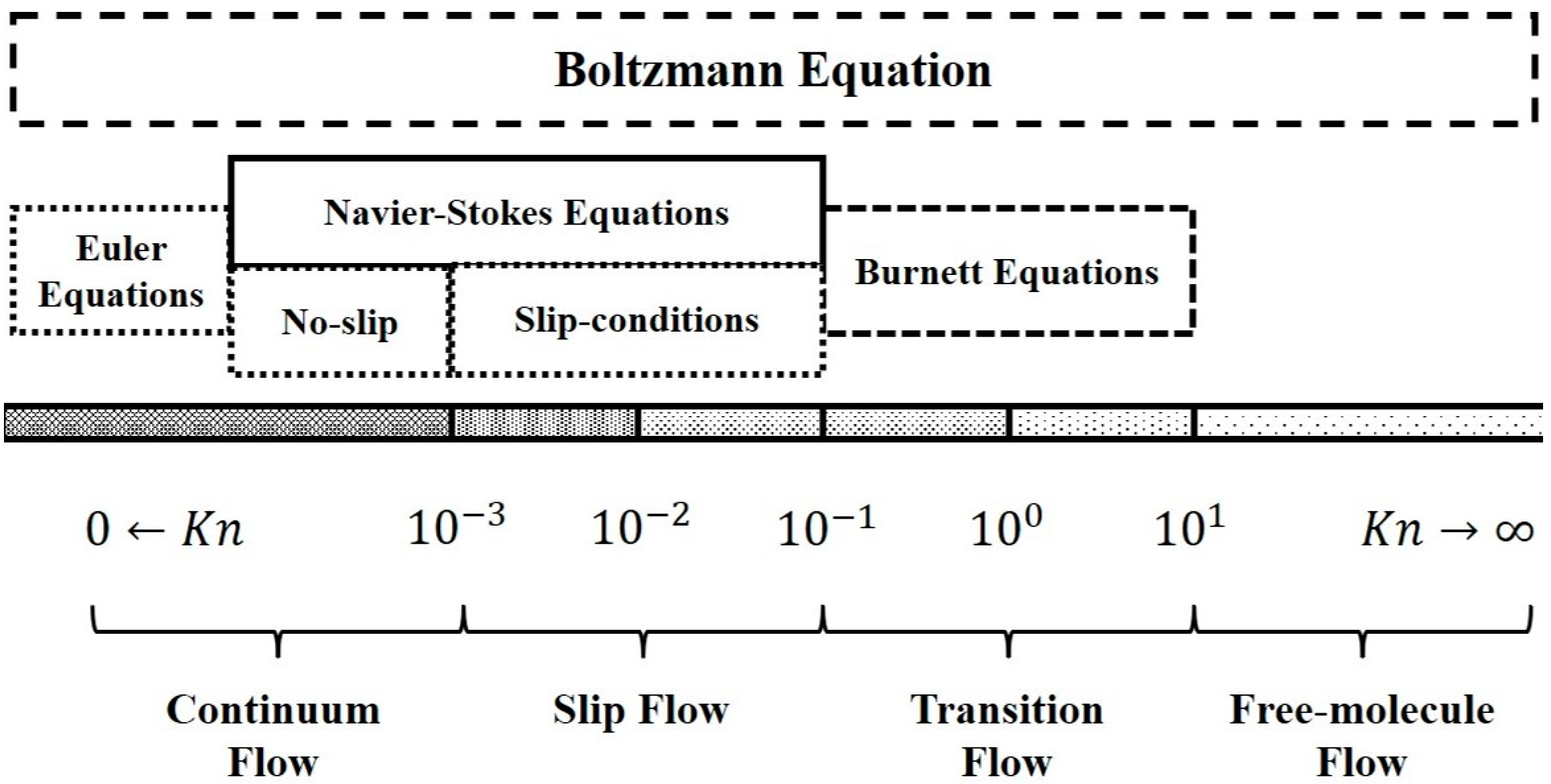
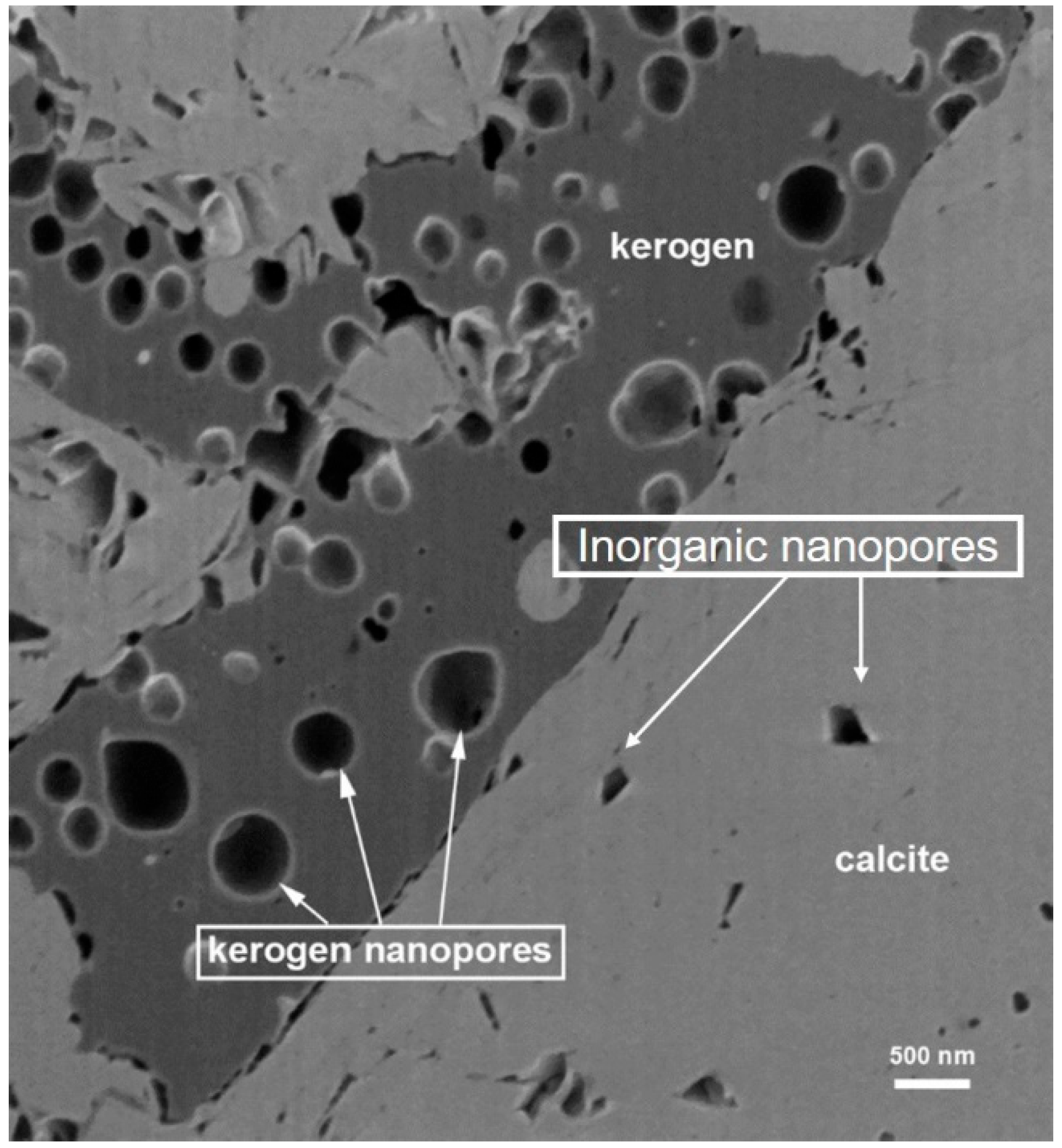
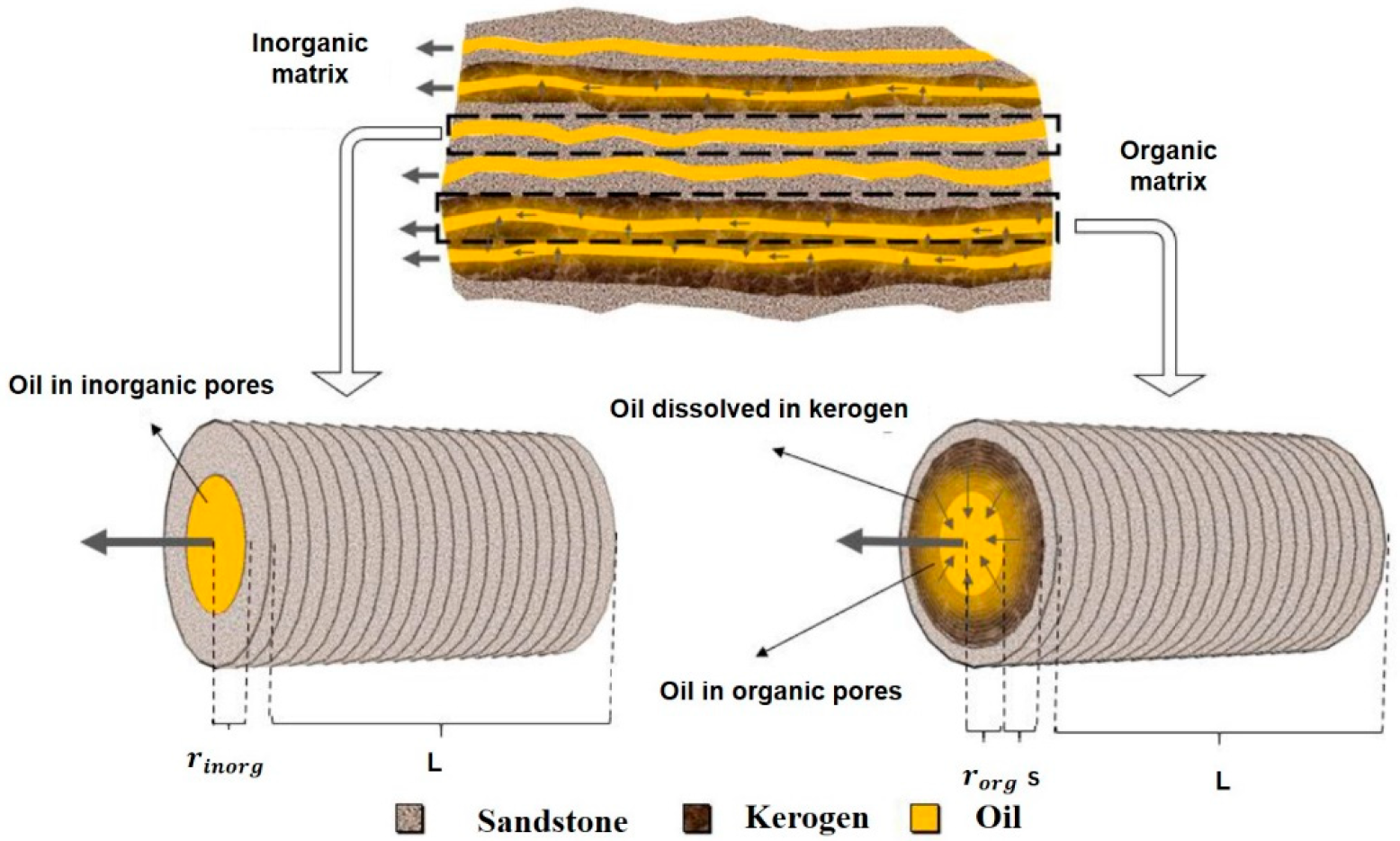



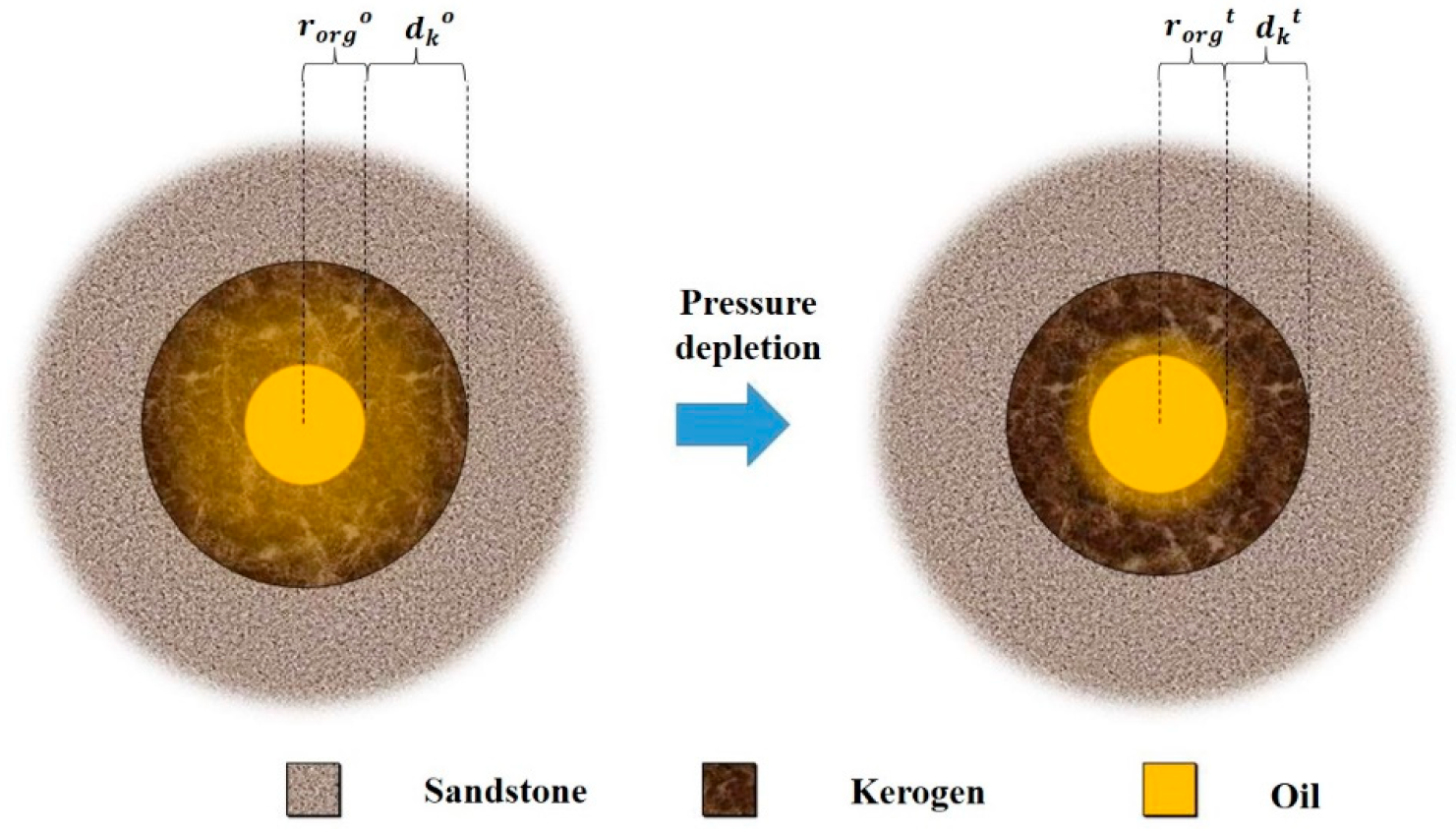
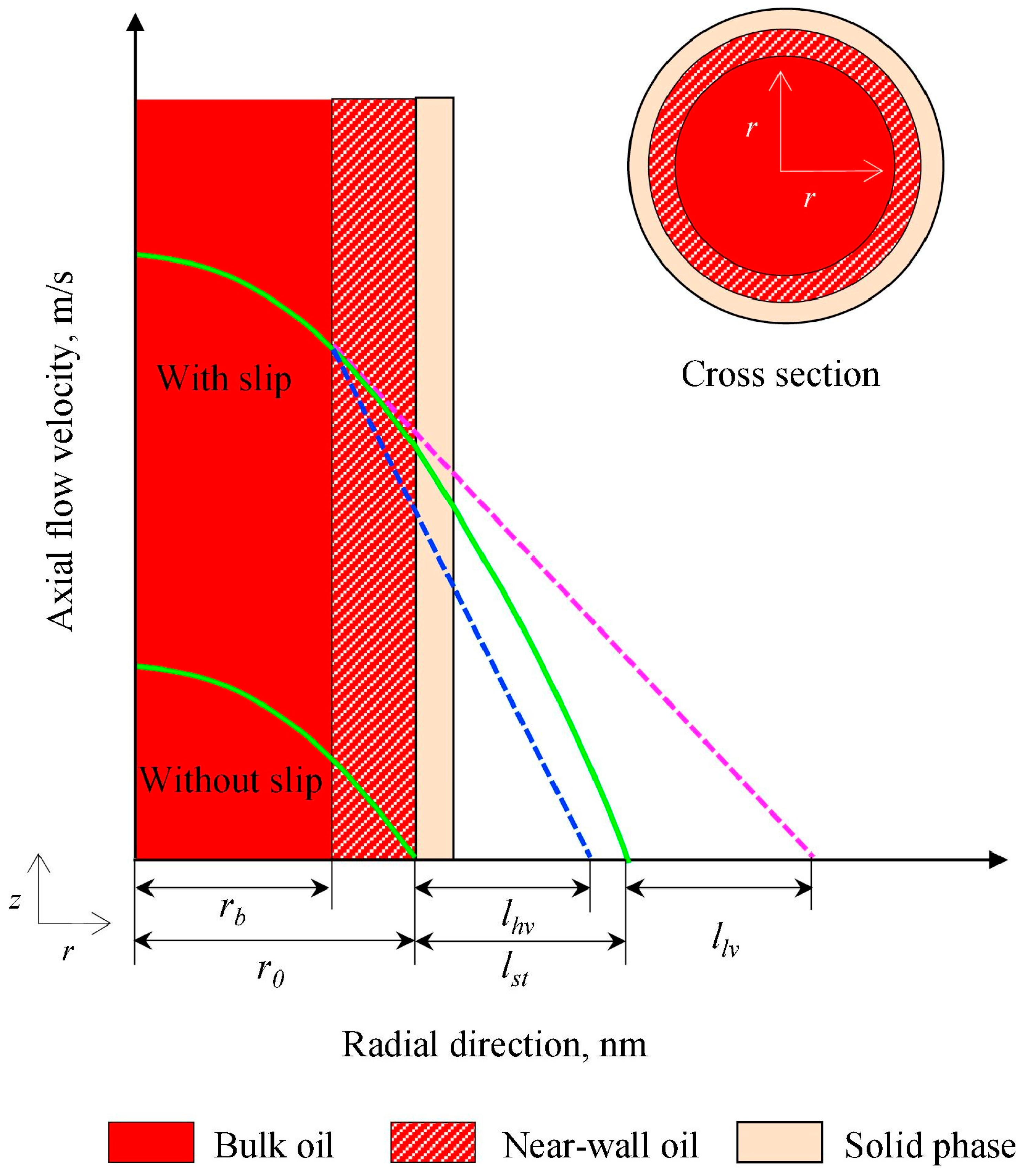



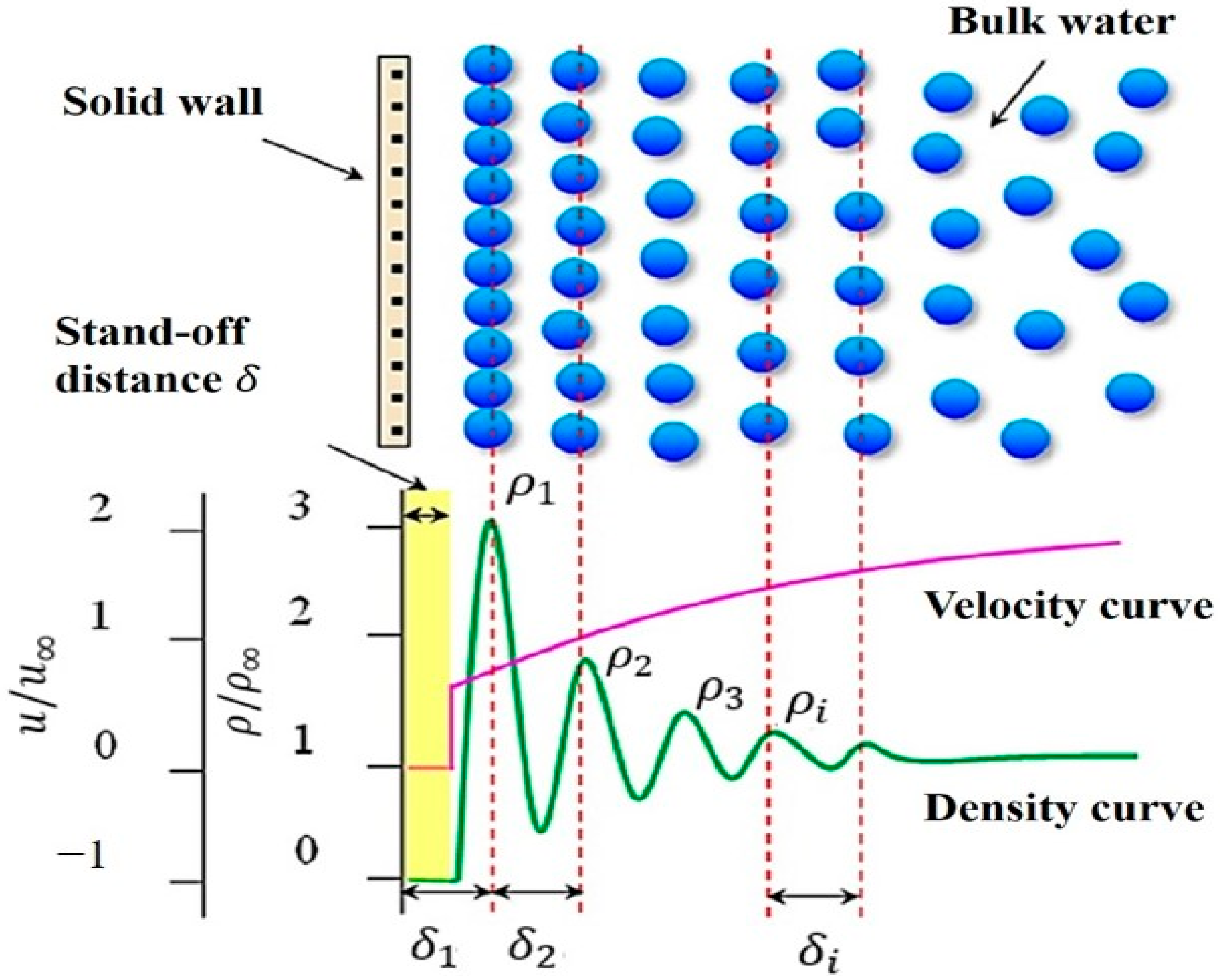
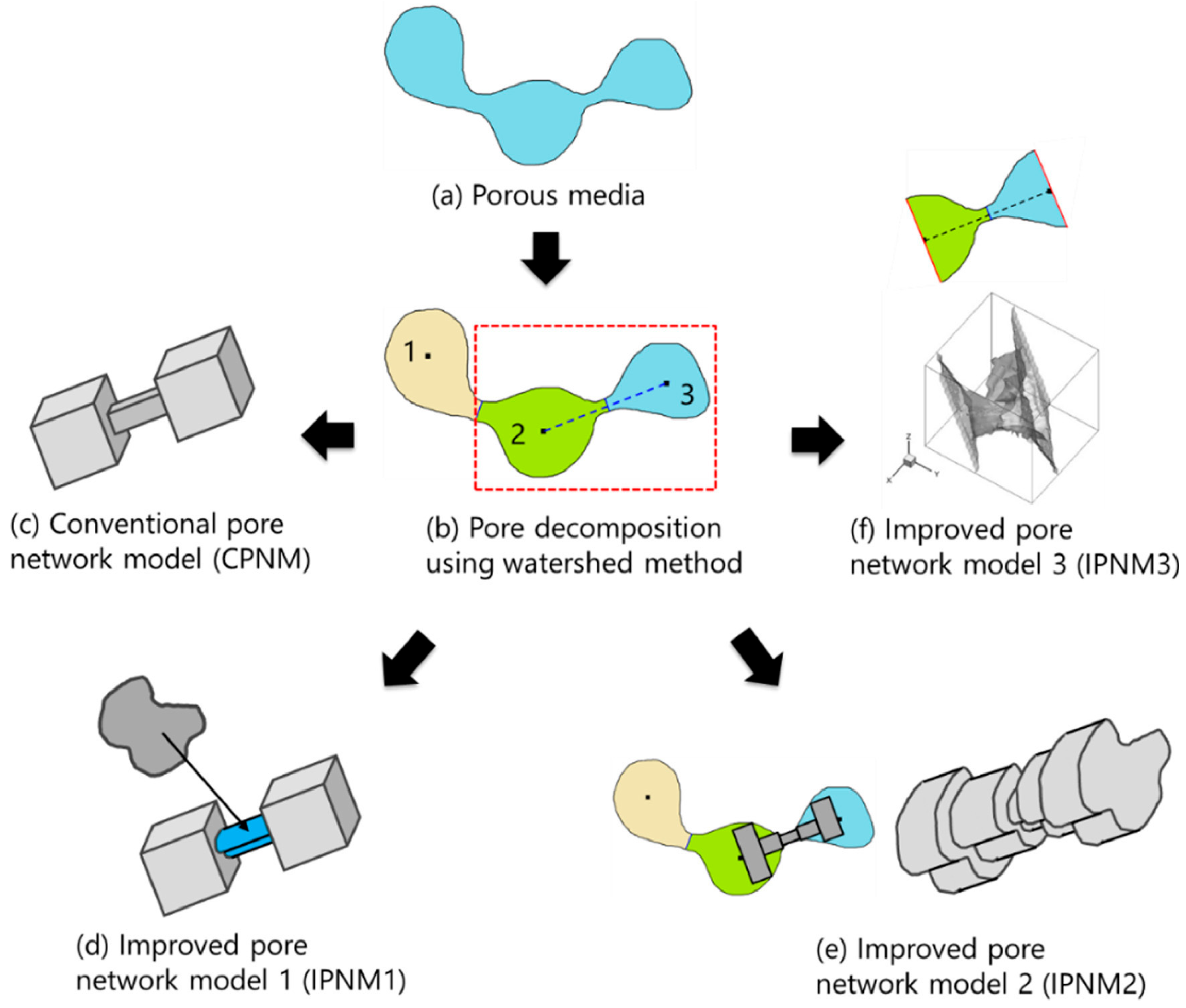

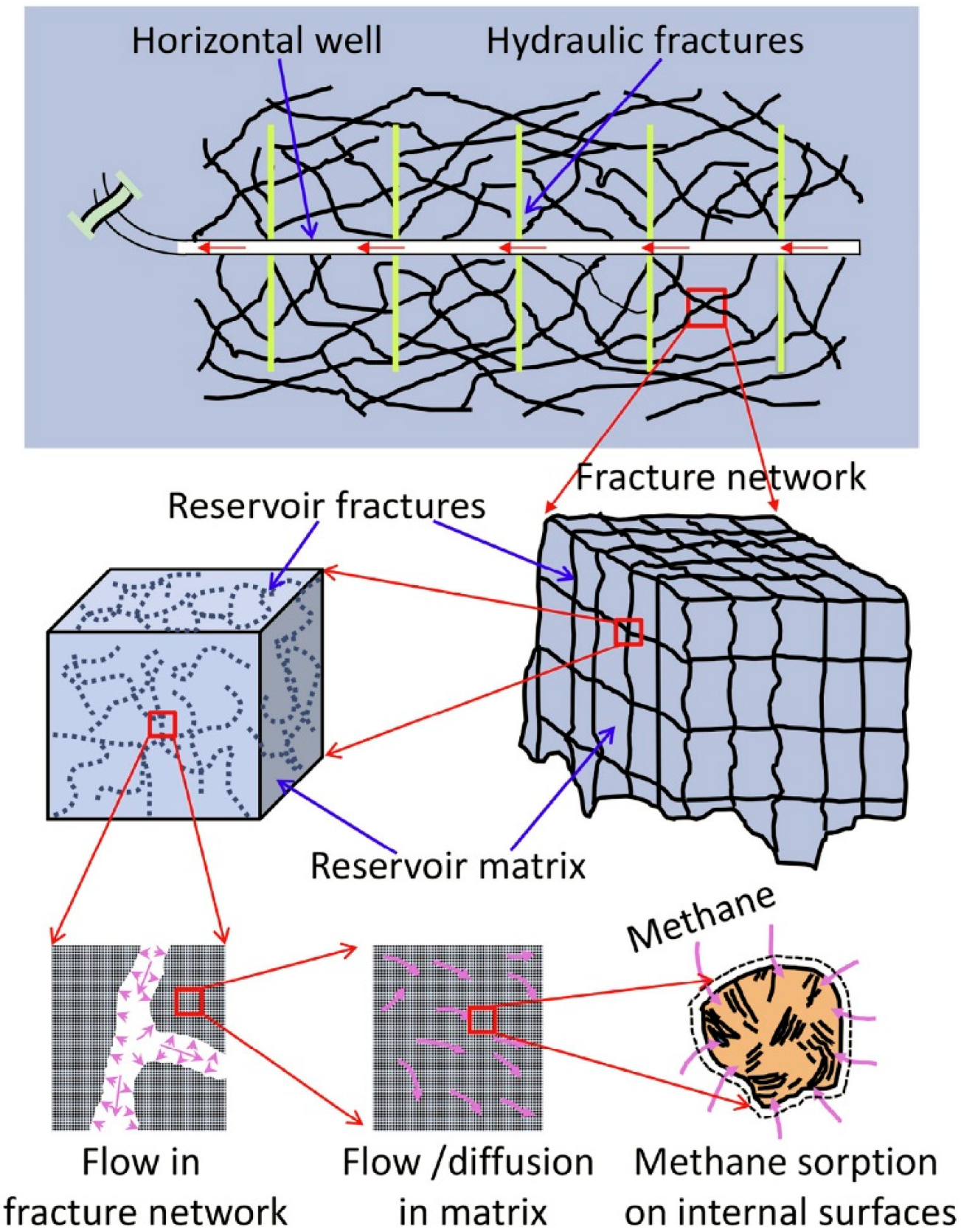

Disclaimer/Publisher’s Note: The statements, opinions and data contained in all publications are solely those of the individual author(s) and contributor(s) and not of MDPI and/or the editor(s). MDPI and/or the editor(s) disclaim responsibility for any injury to people or property resulting from any ideas, methods, instructions or products referred to in the content. |
© 2023 by the authors. Licensee MDPI, Basel, Switzerland. This article is an open access article distributed under the terms and conditions of the Creative Commons Attribution (CC BY) license (https://creativecommons.org/licenses/by/4.0/).
Share and Cite
Li, Z.; Lei, Z.; Shen, W.; Martyushev, D.A.; Hu, X. A Comprehensive Review of the Oil Flow Mechanism and Numerical Simulations in Shale Oil Reservoirs. Energies 2023, 16, 3516. https://doi.org/10.3390/en16083516
Li Z, Lei Z, Shen W, Martyushev DA, Hu X. A Comprehensive Review of the Oil Flow Mechanism and Numerical Simulations in Shale Oil Reservoirs. Energies. 2023; 16(8):3516. https://doi.org/10.3390/en16083516
Chicago/Turabian StyleLi, Zhiyu, Zhengdong Lei, Weijun Shen, Dmitriy A. Martyushev, and Xinhai Hu. 2023. "A Comprehensive Review of the Oil Flow Mechanism and Numerical Simulations in Shale Oil Reservoirs" Energies 16, no. 8: 3516. https://doi.org/10.3390/en16083516
APA StyleLi, Z., Lei, Z., Shen, W., Martyushev, D. A., & Hu, X. (2023). A Comprehensive Review of the Oil Flow Mechanism and Numerical Simulations in Shale Oil Reservoirs. Energies, 16(8), 3516. https://doi.org/10.3390/en16083516






